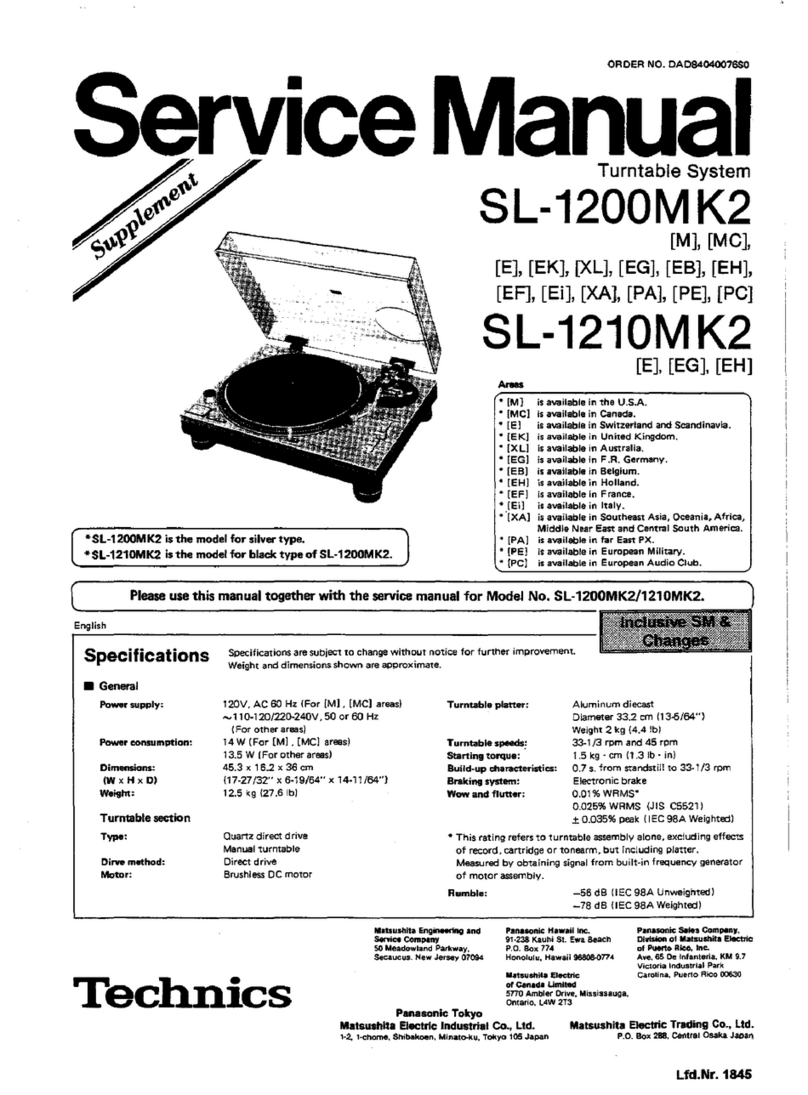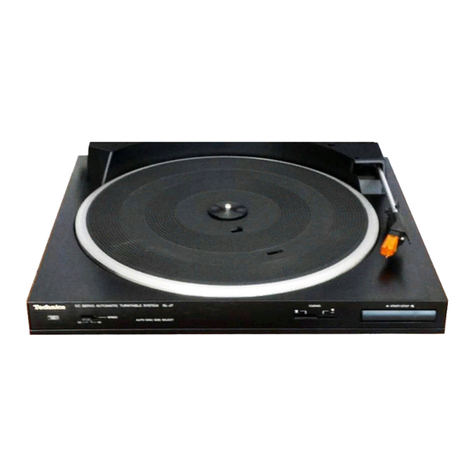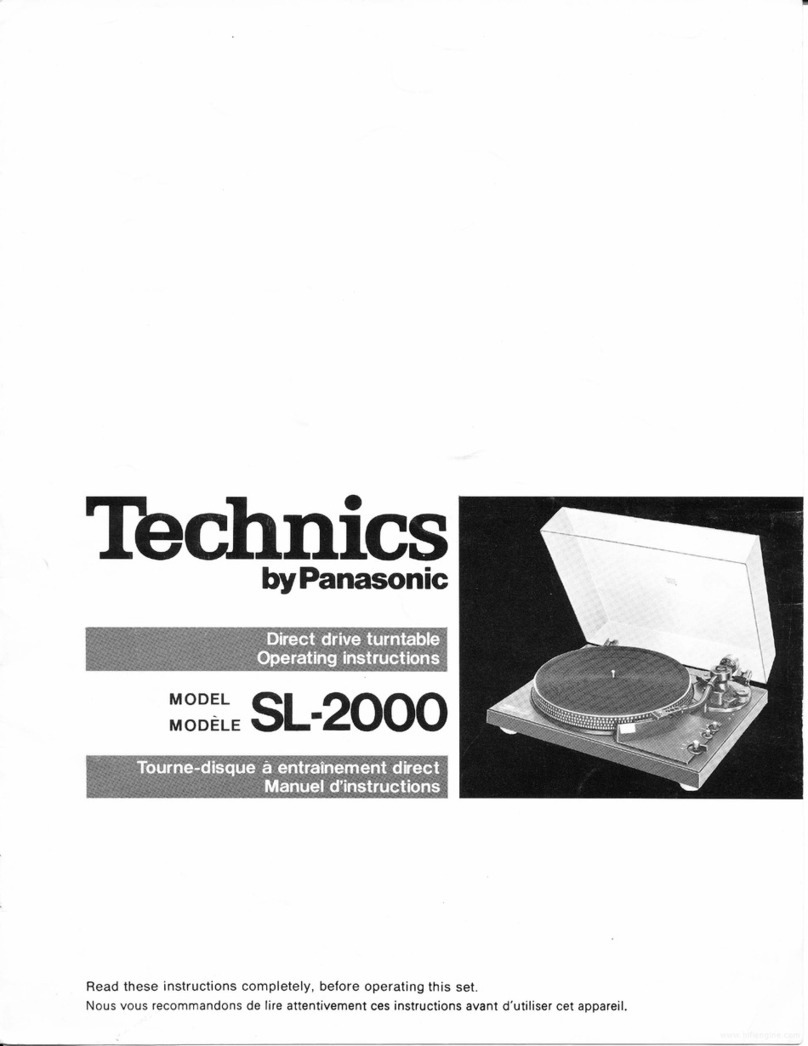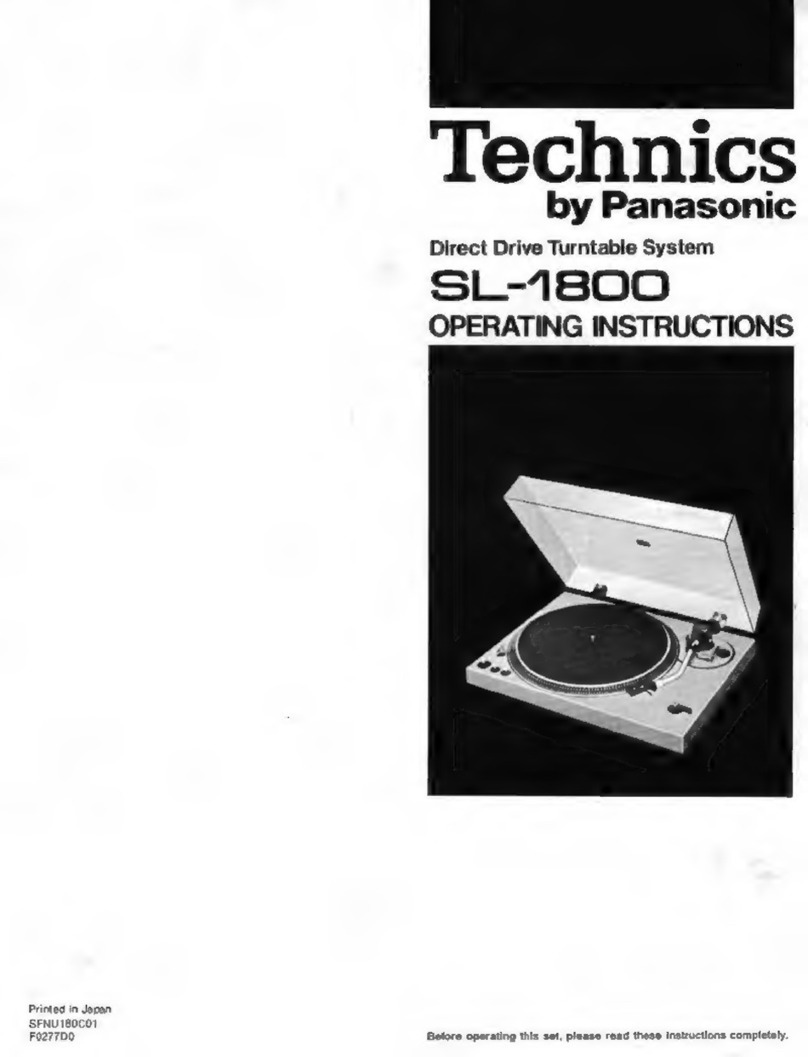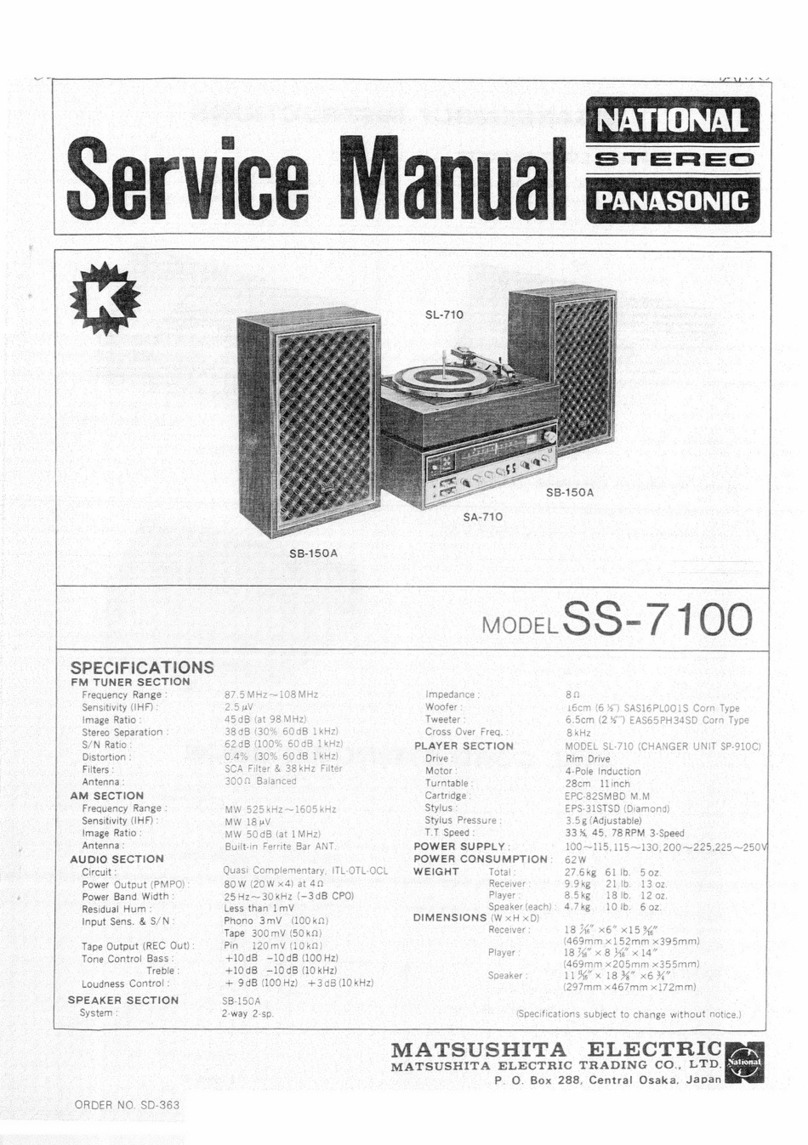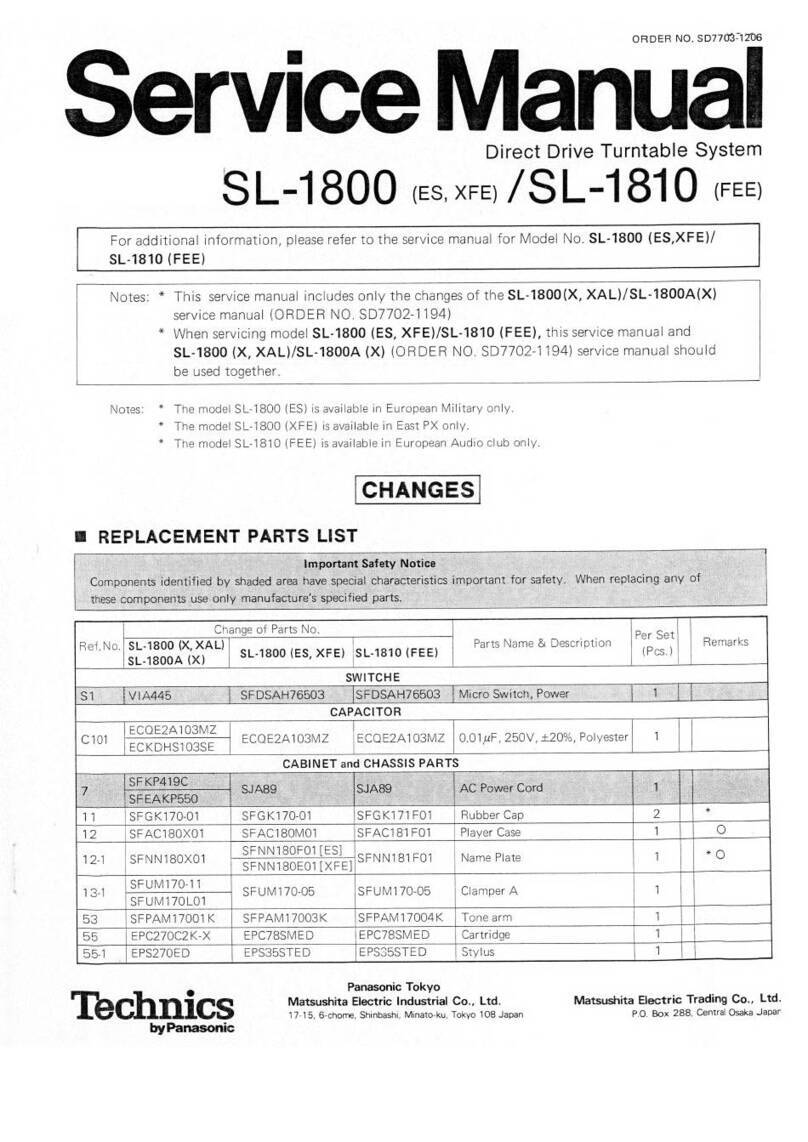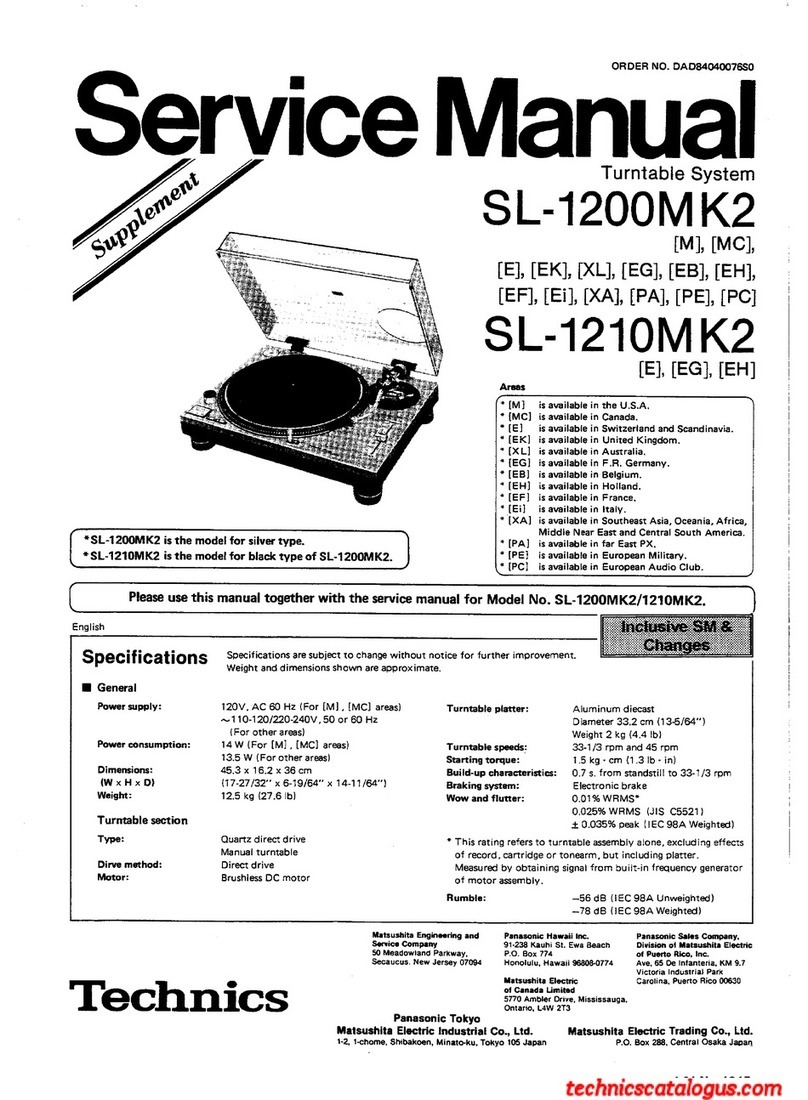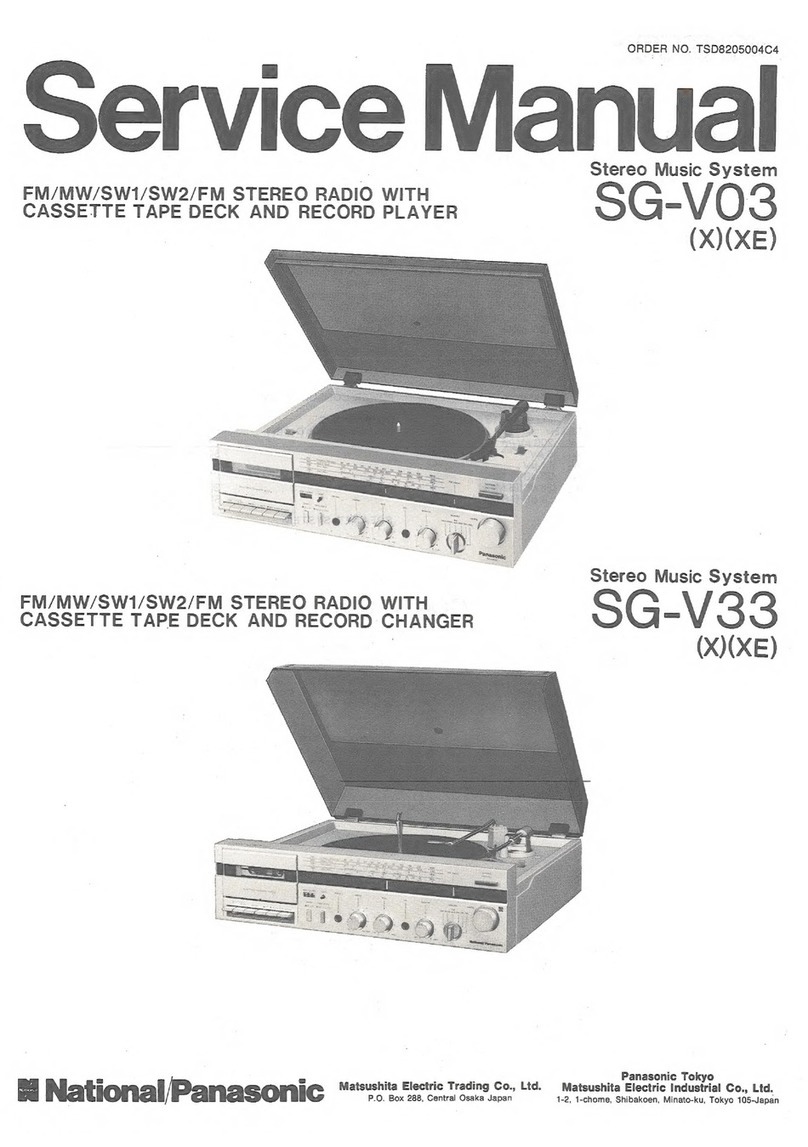
The state under which the strobe dots seem to be power source affects the strobe illuminator, the strobe
stationary represents the correct number of revolu
-
dot pattern also seems to fluctuate to a certain extent.
tions. But the unit is not affected by
-
the fluctuations of the
"+"
direction
power source, since a D.C. motor is employed.
This increases the speed of the turntable rotation, and
5,
If the desired speed can not be obtained by the variable
the strobe dot pattern seems to flow in the same pitch controls, turn the speed adjusting screws with a
direction as the rotational direction of the turntable screw driver for further adjustments. (See Fig.
9)
platter.
"-"
direction
This decreases the speed of the turntable rotation,
resulting in a state opposite to that in the
"+"
direc
-
tion.
Note:
Strobe dot pattern.
The strobe illuminator/pilot lamp of this unit employs
the commercially available power source. The frequency
of such power source, when actually measured, has a
fluctuation of about 0.2%. As such a fluctuation of the
Cross sectionof motor portionand double insulator
Motor shaft (Center spindle) Position detecting rotor
Tonearm
Turntable mat Dust cover
Stator
I
Position detecting coil
I
I-
\
Main base \tator frame
V
isco-elastic material
Operation principles of the
SL
-
1600
Arm base
This unit, like the SL 1300 has a rational motor structure, and its drive control circuit is the B.F.G. type (Back
TECHNICAL EXPLANATION electromotive force frequency generator) which is constructed on a single integrated
circuit (IC) chip (AN630). The following is a block diagram of the IC (AN6303 for which the operating principle will
be briefly explained
Operating principle
The back electromotive force, which is generated by the
drive coil winding according to the rotation of the
motor, is detected and converted to a frequency signal
that is proportional to the numder of revolutions.
Conversion is performed by a wave
-
shaping circuit and a
logic circuit (This is referred to as the B.F.G. method).
This frequency signal is compared with a standard signal
by means of a frequency
-
voltage conversion circuit
which converts
it
to a voltage signal in order maintain a
constant number of revolutions. After removing un
-
necessary
frequency components, with
-
the operational
-
amplifier
active filter, from this voltage signal, itcontrols the cur
-
rent flow in three differential switching circuits. As a
result, the flow of current in the drive coil winding is
always constant maintaining the correct rotational spe
-
ed. Control of the rotational speed can be performed by
means of adjusting the standard signal generator circuit
according to the rotational speed adjustment cricuit.
